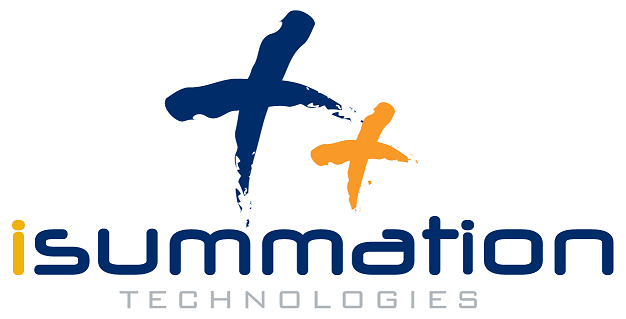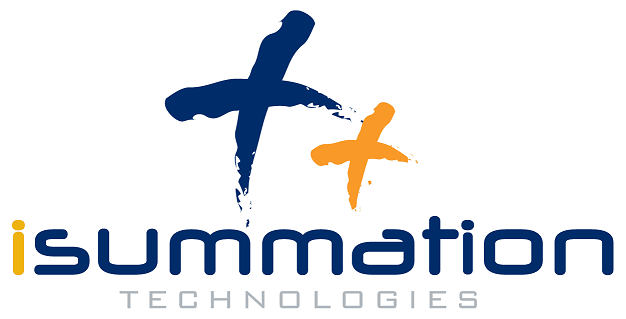- October 7, 2025
- Posted by: iSummation Team
- Category: Development

Security can no longer be an afterthought in software development. As development cycles accelerate, integrating security from the very beginning has become essential for modern enterprises. This is the core principle of DevSecOps, a methodology that embeds security practices within the DevOps workflow. For any organization involved in enterprise software development, understanding and implementing these practices is key to building resilient and secure applications.
This article will explore the essentials of DevSecOps for enterprise app development. We will provide a clear DevSecOps definition, compare DevSecOps vs DevOps, and detail the best practices that can transform your software development lifecycle. You will learn about the DevSecOps model, the best tools for implementation, and how to build a culture of security within your teams.
What is DevSecOps? Defining the Modern Approach
Before we dive into the practices, let’s clearly define DevSecOps. The DevSecOps meaning extends beyond simply adding security to DevOps. It represents a cultural and practical shift where security is a shared responsibility, integrated from end to end in the software development process. It breaks down the traditional silos between development, security, and operations teams, fostering collaboration to produce secure software at high velocity.
The core idea is to “shift left,” which means moving security considerations to the earliest stages of the development lifecycle. Instead of a final security audit before deployment, security is automated and integrated into every phase, from planning and coding to testing and monitoring.
DevSecOps vs DevOps: Understanding the Difference
Many wonders about the distinction between DevSecOps vs DevOps. DevOps focuses on streamlining the software delivery pipeline by unifying development and operations. Its primary goals are speed, efficiency, and continuous delivery.
DevSecOps builds upon this foundation by integrating security as a fundamental component of the pipeline. It doesn’t replace DevOps; it enhances it. While DevOps automates the build and deployment process, DevSecOps automates security checks and validation within that process. The goal is not just to deliver fast, but to deliver securely.
Application Security vs DevSecOps
Another important distinction is between traditional application security (AppSec) and DevSecOps. Traditional AppSec often operates separately from the development team. Security experts would typically conduct penetration testing and vulnerability assessments late in the lifecycle, often after the application is nearly complete. This model creates bottlenecks, as fixing security flaws at this stage is costly and time-consuming.
DevSecOps, in contrast, makes security an integral part of the development workflow. Developers are empowered with tools and knowledge to write secure code from the start. Security becomes a proactive, continuous process rather than a reactive, gatekeeping function. This proactive stance is the defining feature of the DevSecOps framework.
The DevSecOps Lifecycle: Integrating Security at Every Stage
The DevSecOps lifecycle mirrors the standard DevOps pipeline but with security integrated into each phase. A successful DevSecOps model ensures that security is not a single step, but a continuous thread woven throughout the entire process.
1. Plan Phase: Threat Modelling
Security begins before a single line of code is written. During the planning phase, teams should engage in threat modelling. This involves identifying potential security threats, vulnerabilities, and attack vectors for the application. By thinking like an attacker, teams can proactively design countermeasures and security controls into the application’s architecture. This initial step sets the foundation for a secure design and prevents costly architectural changes later.
2. Code Phase: Static Analysis and Secure Coding
As developers write code, security practices must be front and centre. This is where automated tools become crucial.
- Static Application Security Testing (SAST): SAST tools analyse source code for security vulnerabilities without executing the program. They can be integrated directly into the developer’s Integrated Development Environment (IDE) as plugins, providing real-time feedback on issues like SQL injection, cross-site scripting (XSS), and buffer overflows. This immediate feedback loop helps developers learn and fix vulnerabilities as they code.
- Software Composition Analysis (SCA): Modern applications are built using a multitude of open-source libraries and dependencies. SCA tools scan these dependencies for known vulnerabilities and license compliance issues. Given that open-source components can be a major source of risk, SCA is a non-negotiable part of the DevSecOps pipeline.
- Secure Coding Standards: Establishing and enforcing secure coding standards helps prevent common vulnerabilities from being introduced in the first place. A custom software development company should maintain these standards and provide regular training to its developers.
3. Build Phase: Automating Security Checks
When code is committed to a central repository, the Continuous Integration (CI) server automatically builds the application. This is a critical point to integrate further security checks. The CI/CD security tools trigger automated scans (SAST and SCA) with every build. If a high-severity vulnerability is detected, the build can be configured to fail, preventing insecure code from progressing further down the pipeline. This makes security a quality gate, just like unit or integration tests.
4. Test Phase: Dynamic and Interactive Testing
Once the application is built and deployed to a staging environment, more advanced DevSecOps testing can occur.
- Dynamic Application Security Testing (DAST): Unlike SAST, DAST tools test the running application from the outside, simulating attacks to find vulnerabilities. DAST is effective at identifying runtime and configuration issues that SAST might miss.
- Interactive Application Security Testing (IAST): IAST combines elements of both SAST and DAST. It uses agents deployed on the application server to monitor code execution and data flow during manual or automated testing. This provides more accurate results with fewer false positives and can pinpoint the exact line of vulnerable code.
5. Release Phase: Pre-Deployment Security Checks
Before releasing the software to production, final security checks are performed. This includes container scanning if the application is containerized, ensuring that the container images are free from vulnerabilities. Infrastructure as Code (IaC) templates, such as Terraform or CloudFormation scripts, should also be scanned for security misconfigurations. This ensures the underlying infrastructure is as secure as the application itself.
6. Deploy Phase: Secure Deployment Patterns
The deployment process itself should follow secure patterns. Using strategies like blue-green deployments or canary releases allows new versions to be rolled out to a small subset of users first. This minimizes the impact of any unforeseen security issues and allows for a quick rollback if problems are detected. Access controls and secrets management are also critical here, ensuring that credentials and sensitive data are handled securely.
7. Operate and Monitor Phase: Continuous Security Monitoring
Security doesn’t end at deployment. In the production environment, continuous monitoring is essential.
- Runtime Application Self-Protection (RASP): RASP tools integrate into the application runtime to detect and block attacks in real time. They can identify and neutralize threats without human intervention, providing a powerful layer of defence.
- Security Information and Event Management (SIEM): SIEM platforms aggregate and analyse log data from across the infrastructure, helping to detect security incidents and anomalous behaviour.
- Cloud Security Posture Management (CSPM): For cloud-native applications, CSPM tools continuously monitor cloud environments for misconfigurations and compliance violations, which are a leading cause of data breaches.
DevSecOps Best Practices for Enterprise Success
Implementing the DevSecOps lifecycle requires a strategic approach. Here are some of the most critical DevSecOps best practices for any enterprise software development team.
1. Foster a Culture of Shared Responsibility
The most important practice is cultural. DevSecOps fails if security remains the sole responsibility of a separate team. Everyone, from developers and QA engineers to operations staff and product managers, must be security conscious. This requires ongoing education, training, and open communication channels. Leadership must champion this cultural shift from the top down.
2. Automate Everything You Can
Automation is the engine of DevSecOps. Manual security reviews cannot keep pace with agile development. The goal is to automate security controls at every stage of the pipeline. Use DevSecOps automation tools to integrate security scanning, testing, and monitoring directly into your CI/CD workflow. This ensures security is a continuous, frictionless process.
3. Shift Security Left
“Shift left” is the mantra of DevSecOps. By addressing security early in the development process, you reduce the cost and complexity of remediation. Provide developers with the tools and training they need to write secure code from the beginning. Integrating SAST tools into IDEs and running SCA scans on every commit are prime examples of shifting left effectively.
4. Implement a Comprehensive DevSecOps Framework
A structured DevSecOps framework provides a roadmap for implementation. Frameworks like the NIST Cybersecurity Framework or the OWASP Software Assurance Maturity Model (SAMM) can help you assess your current capabilities, identify gaps, and prioritize initiatives. A good framework ensures a consistent and measurable approach to security across the organization.
5. Choose the Right DevSecOps Pipeline Tools
The market for DevSecOps software is vast. Selecting the right tools is crucial for building an effective DevSecOps platform. Your toolchain should cover the entire lifecycle and integrate seamlessly with your existing development and operations tools. Look for solutions that provide actionable insights and minimize false positives to maintain developer trust and productivity.
6. Secure Your CI/CD Pipeline
The CI/CD (Continuous Integration and Continuous Delivery) pipeline is a most targeted for attackers. Securing the pipeline itself is as important as securing the applications it builds. This involves:
- Enforcing strict access controls on your CI/CD servers.
- Using a secure secrets management solution to handle credentials and API keys.
- Regularly scanning the pipeline’s components and dependencies for vulnerabilities.
- Logging and monitoring all pipeline activities for suspicious behaviour.
7. Embrace Infrastructure as Code (IaC) Security
In modern cloud environments, infrastructure is defined by code. Treating infrastructure as code allows you to apply the same DevSecOps principles to your environments as you do to your applications. Scan IaC templates for security misconfigurations before deployment to prevent vulnerabilities in your cloud setup. Tools that integrate with Terraform, CloudFormation, and Ansible are essential here.
8. Prioritize Continuous Monitoring and Feedback
DevSecOps is a continuous loop, not a linear process. Implement robust monitoring in your production environment to detect and respond to threats in real time. The insights gained from production monitoring should feed back into the development process, helping teams understand real-world threats and improve security in future releases. This feedback loop is a core component of the DevSecOps model.
Best DevSecOps Tools for a Modern Toolchain
Building a robust DevSecOps platform requires a curated set of tools that work together. Here’s a breakdown of some leading DevOps security tools across different categories.
CI/CD Security Tools & Pipeline Orchestration
- Jenkins: A highly extensible open-source automation server that can orchestrate the entire DevSecOps pipeline with thousands of plugins.
- GitLab: An all-in-one DevSecOps platform that includes built-in security scanning (SAST, DAST, SCA, container scanning) as part of its CI/CD offering.
- Azure DevOps: Microsoft’s suite of services that provides a complete CI/CD pipeline with strong integrations for security tools from both Microsoft and third parties.
Static Application Security Testing (SAST)
- SonarQube: A popular open-source platform for continuous inspection of code quality and security. It integrates with major CI/CD tools and IDEs.
- CheckMarx: A leading enterprise-grade SAST solution known for its accuracy and broad language support.
- Veracode: A cloud-based platform that offers a suite of application security testing services, including SAST.
Software Composition Analysis (SCA)
- Snyk: A developer-first security platform that specializes in finding and fixing vulnerabilities in open-source dependencies and container images.
- OWASP Dependency-Check: An open-source SCA tool that identifies project dependencies and checks if there are any known, publicly disclosed vulnerabilities.
- Black Duck by Synopsys: A comprehensive solution for managing security, license compliance, and operational risks in open-source software.
Dynamic Application Security Testing (DAST)
- OWASP ZAP (Zed Attack Proxy): A widely used open-source web application security scanner. It’s great for integration into automated CI/CD pipelines.
- Invicti (formerly Netsparker): A commercial DAST tool known for its Proof-Based Scanning technology, which automatically verifies vulnerabilities to reduce false positives.
Best DevSecOps Tools for Cloud Security
- Prisma Cloud by Palo Alto Networks: A comprehensive Cloud Native Security Platform (CNSP) that provides CSPM, cloud workload protection, and network security.
- Aqua Security: A platform focused on securing container-based and serverless applications from development to production.
- HashiCorp Vault: The industry standard for secrets management. It securely stores and controls access to tokens, passwords, certificates, and encryption keys.
Choosing the right combination of these software security tools allows an organization to build a tailored DevSecOps technology stack that fits its specific needs, whether for custom software development or large-scale enterprise applications.
Conclusion: Building a Secure Future with DevSecOps Services
Adopting DevSecOps is a transformative journey that goes far beyond implementing a new set of tools. It’s a fundamental change in culture, mindset, and process. For any software development company, especially those engaged in enterprise software solution, embracing DevSecOps is no longer optional, it’s essential for survival and success.
By embedding security into every stage of the software development lifecycle, enterprises can deliver more secure products faster, reduce risk, and build trust with their customers. The path begins with understanding the core principles, adopting a robust DevSecOps framework, and empowering teams with the right automation tools and training. The result is a resilient, efficient, and secure software delivery process that is ready to meet the challenges of the future. Start by fostering a security-first culture and automating one step at a time, and you will be well on your way to mastering DevSecOps.


